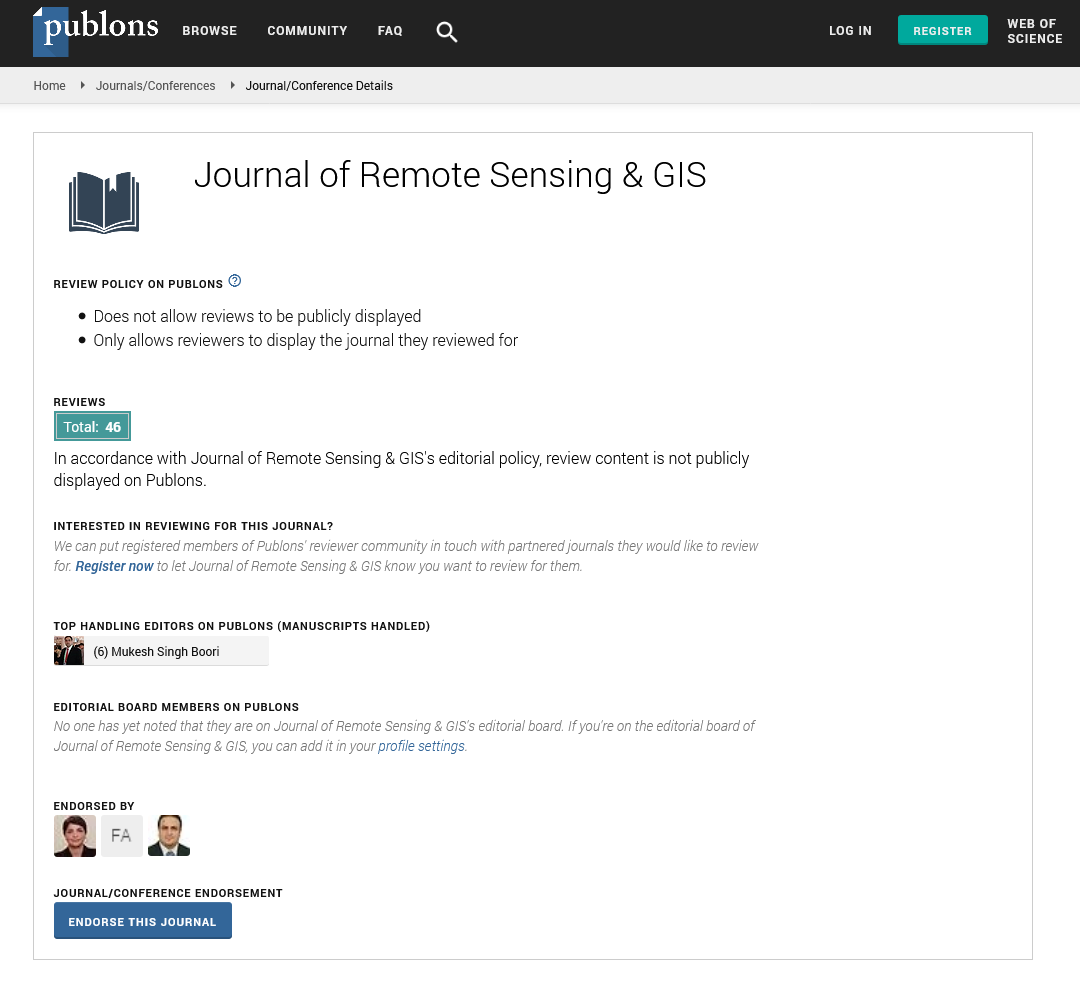Indexed In
- Open J Gate
- RefSeek
- Hamdard University
- EBSCO A-Z
- OCLC- WorldCat
- Publons
- International Scientific Indexing
- Euro Pub
- Google Scholar
Useful Links
Share This Page
Journal Flyer

Open Access Journals
- Agri and Aquaculture
- Biochemistry
- Bioinformatics & Systems Biology
- Business & Management
- Chemistry
- Clinical Sciences
- Engineering
- Food & Nutrition
- General Science
- Genetics & Molecular Biology
- Immunology & Microbiology
- Medical Sciences
- Neuroscience & Psychology
- Nursing & Health Care
- Pharmaceutical Sciences
Noise pollution evaluation of Ghanat Kosar district in Tehran by geographic information system
5th International Conference on GIS and Remote Sensing
September 16-17, 2019 | Rome, Italy
Milad Davoudkhani
Geomatics College of National Cartographic Center of Iran (NCC), Iran
Posters & Accepted Abstracts: J Remote Sens GIS
Abstract:
GIS has different applications in various fields and one of its important applications is in the environment and mapping of noise pollution. Noise pollution is one type of the environmental pollution which threatens the life of living creatures. The extent of physical and mental damage of this type of pollution is so much that technical and international standards have been defined for it. In big cities such as Tehran (capital of Iran) the extent of this pollution is beyond the standards and some areas are experiencing critical and dangerous stages. Thus, dealing with this type of pollution in urban areas should be a priority for governments. Before taking the necessary measures for reducing noise pollution in an area first we need to assess the extent of it in that area and make the required analysis on it. This study was conducted to evaluate the level of noise by using GIS in Ghanatkosar district of Tehran. 51 stations have been chosen in this area and The Levels of noise of selected stations, including equivalent sound pressure level (Leq), minimum sound pressure level (Lmin), maximum sound pressure level (Lmax) were estimated using TES-1535 calibrated sound level meter. This study is done in two temporal ranges, namely: day time (7:00 to 22:00), and night time (22:00 ??? 7:00) in spring of 2019 and the required noise maps for noise pollution analysis were obtained using ARCGIS software. GIS-aided noise maps of the area showed that a large part of the area in question has poor conditions in terms of sound pollution. Only about 8 out of 51 estimated stations have standard conditions as regards the noise pollution and the said pollution is beyond the standard level in the remaining 43 stations. Therefore, it is necessary to take some measures in the area, including creating green spaces, installing sound walls, forbidding the commuting of trucks and noisy vehicles, etc. to improve the conditions of the area in terms of noise pollution.

